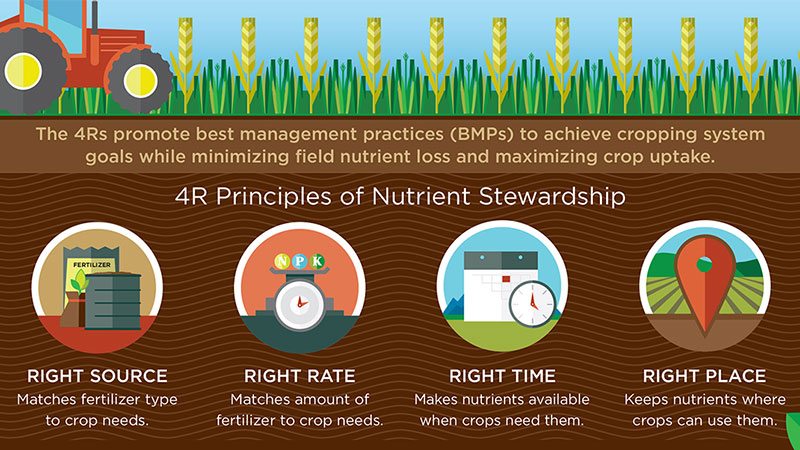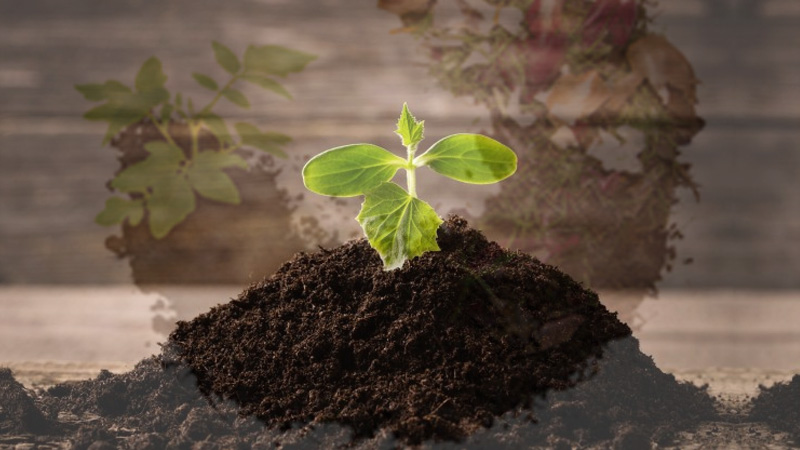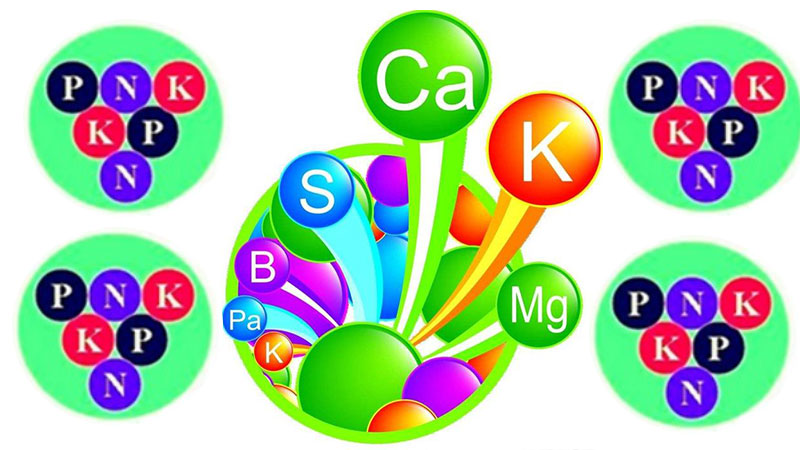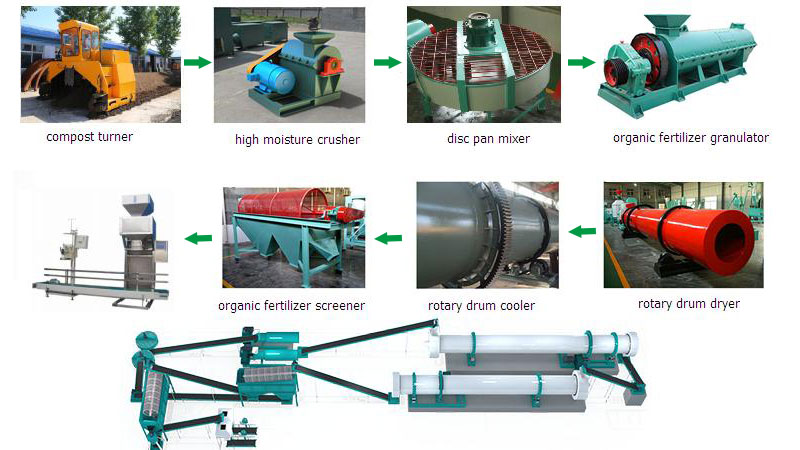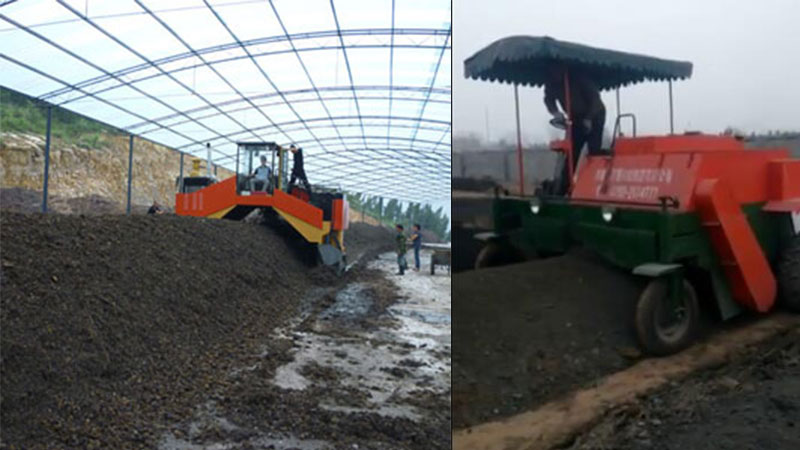Plants need 17 elements for normal growth. Carbon, hydrogen, and oxygen come from the air and water. Soil is the principle source of other nutrients. Primary nutrients(nitrogen, phosphorus, and potassium) are used in relatively large amounts by plants, and often are supplemented as fertilizers. Nitrogen helps plants make the proteins they need to produce new tissues. Phosphorus stimulates root growth, helps the plant set buds and flowers, improves vitality and increases seed size. Potassium improves overall vigor of the plant.
|
Primary Nutrients
|
Secondary Nutrients
|
Micronutrients or Trace Elements
|
|
Nitrogen
|
Calcium
|
Iron
|
|
Phosphorus
|
Magnesium
|
Manganese
|
|
Potassium
|
Sulfur
|
Zinc
|
|
Copper
|
||
|
Boron
|
||
|
Molybdenum
|
It is important to know the significant influence of N, P, K fertilizer on plant growth. While it is more essential to know how to properly apply the fertilizer so as to avoid unnecessary losses.
Basic Principles of Fertilizer Application
1.Balance Fertilization
Excessive fertilization is one of the causes for low fertilizer use efficiency.
Though the elements required for plant growth with many distinction, the elements must maintain a degree of balance to maintain its normal growth. When one of these elements with the low proportion, the growth of the whole plant will affect by the low proportion. That is the minimum rate of nutrient for plant growth. So, we should take the concept of nutrient balance when fertilize plants.
Long-term experiments demonstrate that utilization of nitrogen (N) alone, or N and phosphorus (P) created deficiencies of potassium (K) that can only be overcome by application of K fertilizers. Attention must also be given to other essential nutrients as well as the use of manures. A combination of organic manures and fertilizers is always beneficial for achieving highest nutrient recovery and best fertilizer use efficiency.
2.Timing of Application
Fertilizer application should be timed to achieve maximum plant uptake, thereby reducing losses of nutrient to the environment. Ideal timing will be affected by the solubility (mobility) of the nutrient or fertilizer used, crop stage and rate of growth (and therefore its nutrient demand) and the nutrient fixing capability of the soil.
Plant growth processes can be roughly divided into vegetative growth, differentiation and the reproductive stage. The fertilizer and it’s amounts required at each of the stage is different. The plant growth should to meet the needs of plant nutrition, to apply fertilizer at the right time.
3.The Reward – decreasing Rate
From the experience of crops cultivation, in the processing of crops cultivation, the most limiting growth elements of crops are nitrogen, phosphorus and potassium, which commonly refers to the three elements of plants fertilizer.
Suppose that nitrogen is the lacking of nutrients element in the plant growth process, nitrogen fertilization will soon enhance the effects the plant growth, while the growth rate of plant will not increase as nitrogenous fertilizer applying continuously, in contrast, decrease it’s growth rate. Though more nitrogen be fertilized, less plant growth rate can be seen.That is, the reward – decreasing rate of fertilization. So, the benefits of fertilization and the amount of nitrogen fertilizer should be take into the consideration.
Some Common Misconceptions of Fertilization Application
A. Fertilization time myths:
MYTH #1: Fertilization after crops lack of fertilizers
FACT: It takes 3-5 days for rice to absorb fertilizer nutrient in water while it takes 5-7 days for crops to absorb nutrients in dry land, so fertilization after crops lack of fertilizers will cause long-time nutrients-lacked and then reduce production. Advanced fertilization should be different from characteristics of crops. Leaf fertilizer can be directly absorbed by leaves with features of fast effect, so this kind fertilizer is better to fertilize a little later in low-concentration. Liquid fertilizer can be directly absorbed by roots effectively and quickly, so it may be appropriate to delay. Dry fertilizer with slow effect should be applied early.
MYTH #2: Fertilizing fruits trees by observing flowers
FACT: Some people like to fertilize fruits trees in winter, useful but not the best time. Although root is the most important part to absorb fertilizer nutrients, root system is almost in the state of dormant, with weak absorption. In fact, the best time for fruits trees is the period before defoliation and after picking fruits. Apparent biennial bearing is the direct results caused by fertilization according to fruits phenomenon.
B. Fertilization methods myths
MYTH #1: Same formula, same amount and same effect
FACT: The reason is very simple, the main difference between the fat and the thin people is not eat more or less, but absorb more or less. Fertilizer is also the same! The fertilizers themselves have a significantly different nutrient utilization rate, that’s why some low-concentration of fertilizer has a better effect than some higher-concentration of fertilizer.
MYTH #2: Fertilizer dissolving faster, fertilization effects better
FACT: Crops need to absorb nutrients everyday with a limited amount. As for fast-released fertilizer, crops can’t absorb all released nutrients timely which may wastes more. Adding release agent into fertilizer products is to ensure crops can absorb balancedly all the time. But i think that controlled release fertilizer is not used as top fertilizer because if released nutrients could not keep pace with crops demands which would result in lacking of nutrients phenomenon.
MYTH #3: Fertilizers close to plants stems when fertilization, easier for plants to absorb.
FACT: This fertilization method is harmful for crops in some rural areas. Root hair zone is the key part to absorb nutrients while plant stems and roots(root hair zone except) often absorb less or nothing. If fertilizer is close to plant stems, it may cause less nutrient-absorption or “burn root” by high concentration. The application of water soluble fertilizer should mix with soil or dilute after watering or irrigate immediately after fertilization to avoid burning roots.
C. Nutrition partitioning
MYTH #1: Only base fertilizer, without topdressing
FACT: It is not scientific to ignore topdressing after application of base fertilizer. Appropriate base fertilizer can really guarantee a long time of nutrients demand, but considering limited fertilizer effect, it should apply appropriately in sandy loam soil which has poor moisture retention ability. To ensure nutrient demand in vigorous growth period, it is necessary to fertilize topdressing as for crops growth more than 2 months.
MYTH #2: Only use chemical fertilizer
FACT: It is wrong that some farmers only use chemical fertilizer. The general compound fertilizer only contain nitrogen, phosphorus and potassium, few type containing a small amount of zinc and boron. If farmers do not pay more attention to replenish effective micronutrients and organic living nutrient, it will have a bad impact on crops yield and quality.
MYTH #3: Preferring topdressing nitrogen fertilizer
FACT: Some nitrogen fertilizer such as ammonium bicarbonate fertilizer and urea really have a significant effect on crops growth but not increasing production. Nitrogen is very important for crops in the early stage of growth, while they will need a higher level of phosphorus, potassium, organic nutrition according to growth demand, nitrogen decreased.

